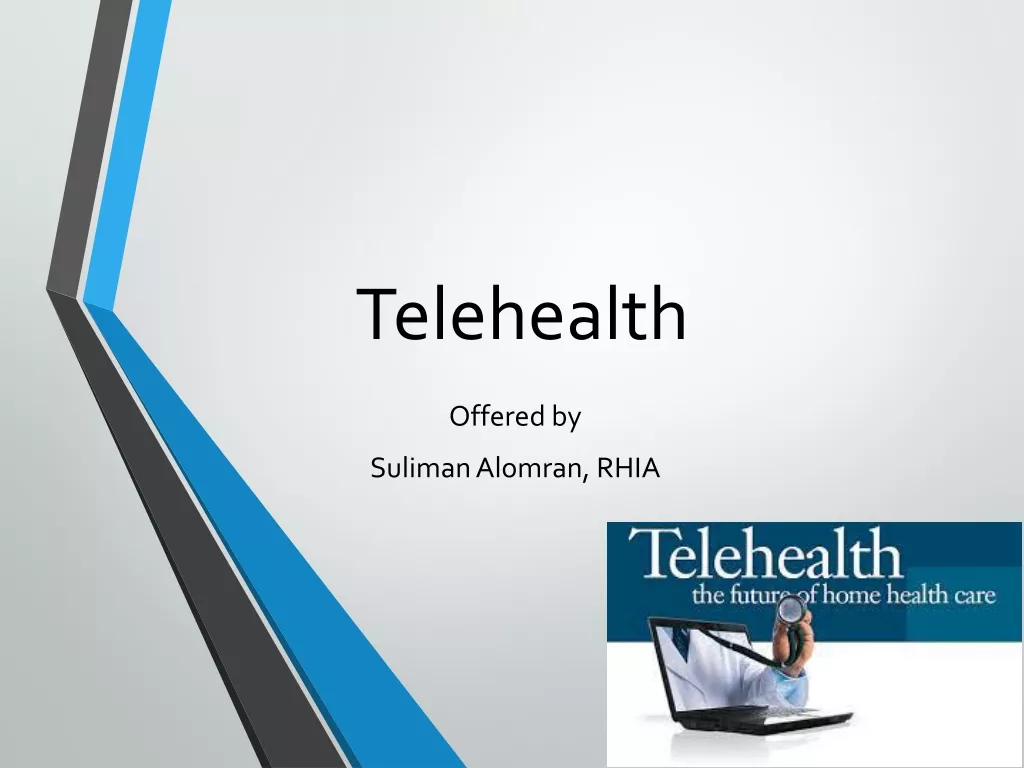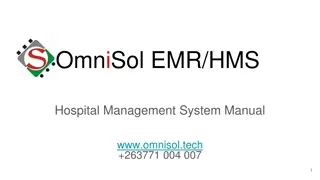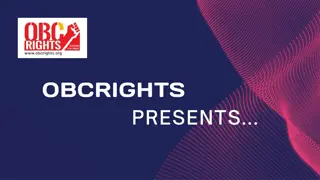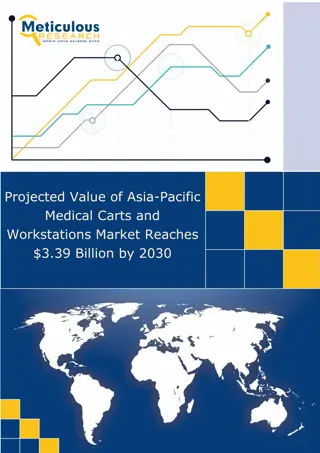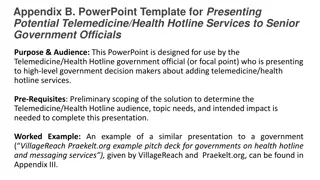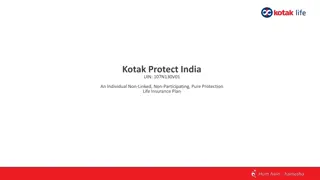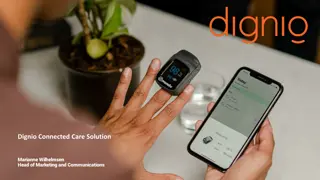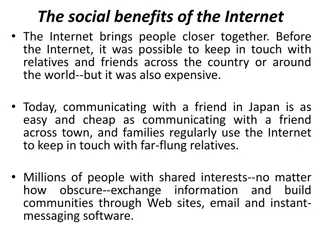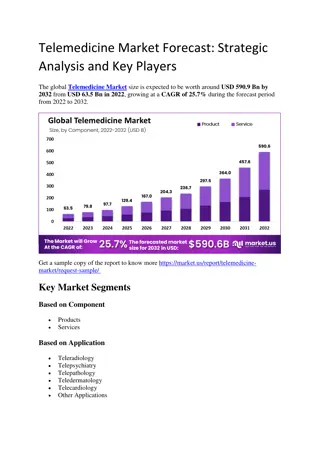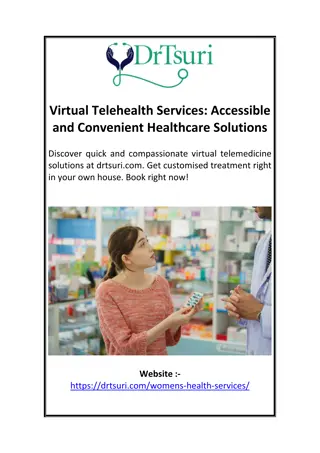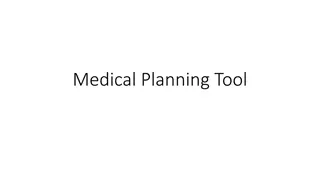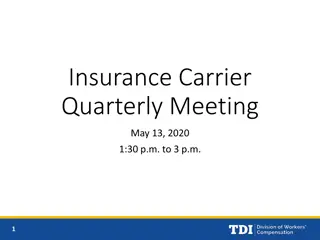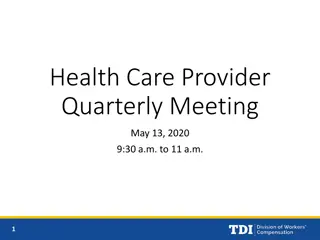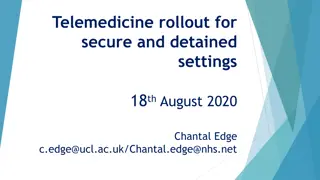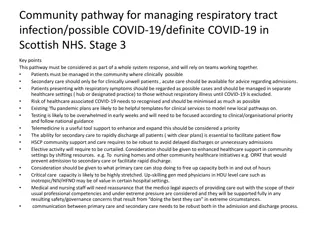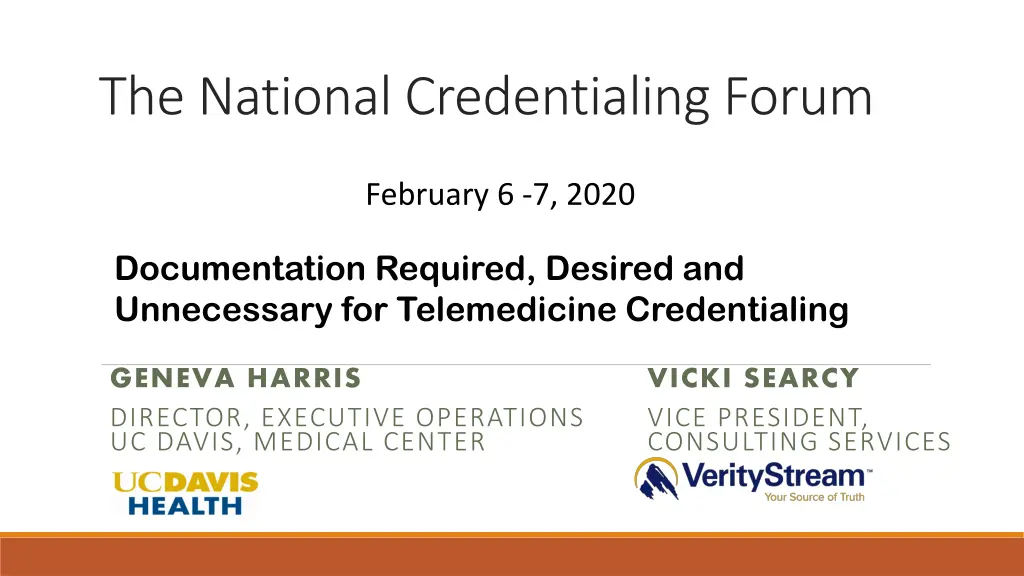
Telemedicine Credentialing Overview & Best Practices
Explore the essential documentation and processes required for telemedicine credentialing, including credentialing by proxy, industry trends, and regulatory compliance with CMS and Joint Commission standards. Learn about the changing landscape of telehealth services and how healthcare organizations are adapting to serve patients effectively.
Download Presentation

Please find below an Image/Link to download the presentation.
The content on the website is provided AS IS for your information and personal use only. It may not be sold, licensed, or shared on other websites without obtaining consent from the author. If you encounter any issues during the download, it is possible that the publisher has removed the file from their server.
You are allowed to download the files provided on this website for personal or commercial use, subject to the condition that they are used lawfully. All files are the property of their respective owners.
The content on the website is provided AS IS for your information and personal use only. It may not be sold, licensed, or shared on other websites without obtaining consent from the author.
E N D
Presentation Transcript
The National Credentialing Forum February 6 -7, 2020 Documentation Required, Desired and Unnecessary for Telemedicine Credentialing GENEVA HARRIS DIRECTOR, EXECUTIVE OPERATIONS UC DAVIS, MEDICAL CENTER VICKI SEARCY VICE PRESIDENT, CONSULTING SERVICES
Documentation Required, Desired and Unnecessary for Telemedicine Credentialing Overview Telehealth services are rapidly growing. Almost all healthcare organizations either receive and/or offer telehealth services. Telehealth is fundamentally changing the way patients receive healthcare services. Health system/hospital credentialing and privileging departments need to credential, store and transmit/share information about healthcare providers who provide telehealth services. There is a lot of misunderstanding in the healthcare industry about telehealth and the related privileging requirements. As industry leaders, we need to provide clear recommendations and process for best practice techniques for storing, managing and sharing information/documents. 2
Credentialing by Proxy The Medicare Conditions of Participation require hospitals and certain other accredited health care facilities and providers to have a credentialing and privileging process for physicians and practitioners providing services to the hospital s/facilities patients. This includes providers who provide services via telehealth. CMS permits a streamlined process to authorize the use of telehealth providers. This is commonly referred to in the industry as credentialing by proxy. It permits the hospital/facility receiving the telehealth services (known as the Originating Site hospital) to rely on the privileging and credentialing decisions made by the hospital or entity providing the telehealth services (known as the Distant Site hospital or Distant Site Telehealth Entity respectively), provided certain requirements are met. 3
Where are we as an Industry? The credentialing industry is rather slow to incorporate change. Survey conducted in June, 2019 by VerityStream revealed that: 12% use credentialing by proxy only 46% use a combination (they do some credentialing by proxy as well as full credentialing) 42% fully credential all telehealth providers 4
Documentation required by CMS regulation and Joint Commission standards July 2011 modified COP 482.12 Hospital Governing Body and 482.22 Hospital Medical Staff Contract One credentials file List of privileges Privilege Delineation Adverse Events Complaints Bylaws and Policies/Procedures Joint Commission MS.13.01.01 and MS.13.01.03 Proxy Credentialing Process Recommend clinical services appropriately delivered via telemedicine link 5
DATA NEEDS DISTANT SITE VS. ORIGINATING SITE DISTANT SITE ORIGINATING SITE Contract Contract Provider Summary Report List of Providers by Contract Data Elements to Query NPDB NPDB Report Privilege Delineation MSEC and Governing Body approval date/duration Provider non-compliant Action Report Provider non-compliant Action Report Adverse Events and Complaints Adverse Events and Complaints Bylaws and Policies/Procedures Bylaws and Policies/Procedures Annual Contract Review (encounters, services, outcomes) Telemedicine Center Operations Telemedicine Services Operations 6
Documents Not Required at Originating Site Signed application or recredentialing application Attestation Medical Staff membership TB Test Signed privilege delineation request Flu Shot Individual credentialing files Copy of provider distant site privilege delineation 7
Managing the Data Associated with Telehealth Data entry should be limited to address the following: Data that is required by the organizations EMR/billing system (if this data is provided via interface from the credentialing system) Data needed to make a query to the NPDB and to confirm State licensure Privileges granted (so that they can be displayed to patient care staff) There should be some way of identifying providers in the database that provide ONLY telehealth services (for ease of reporting). Identification of the provider along with a link to the related contract is essential. Track the initial Board approval date but thereafter, the approval is by the contract, not by individual provider. 8
Challenge Industry Leaders What documents can you eliminate, reduce, simplify in your process? 9

